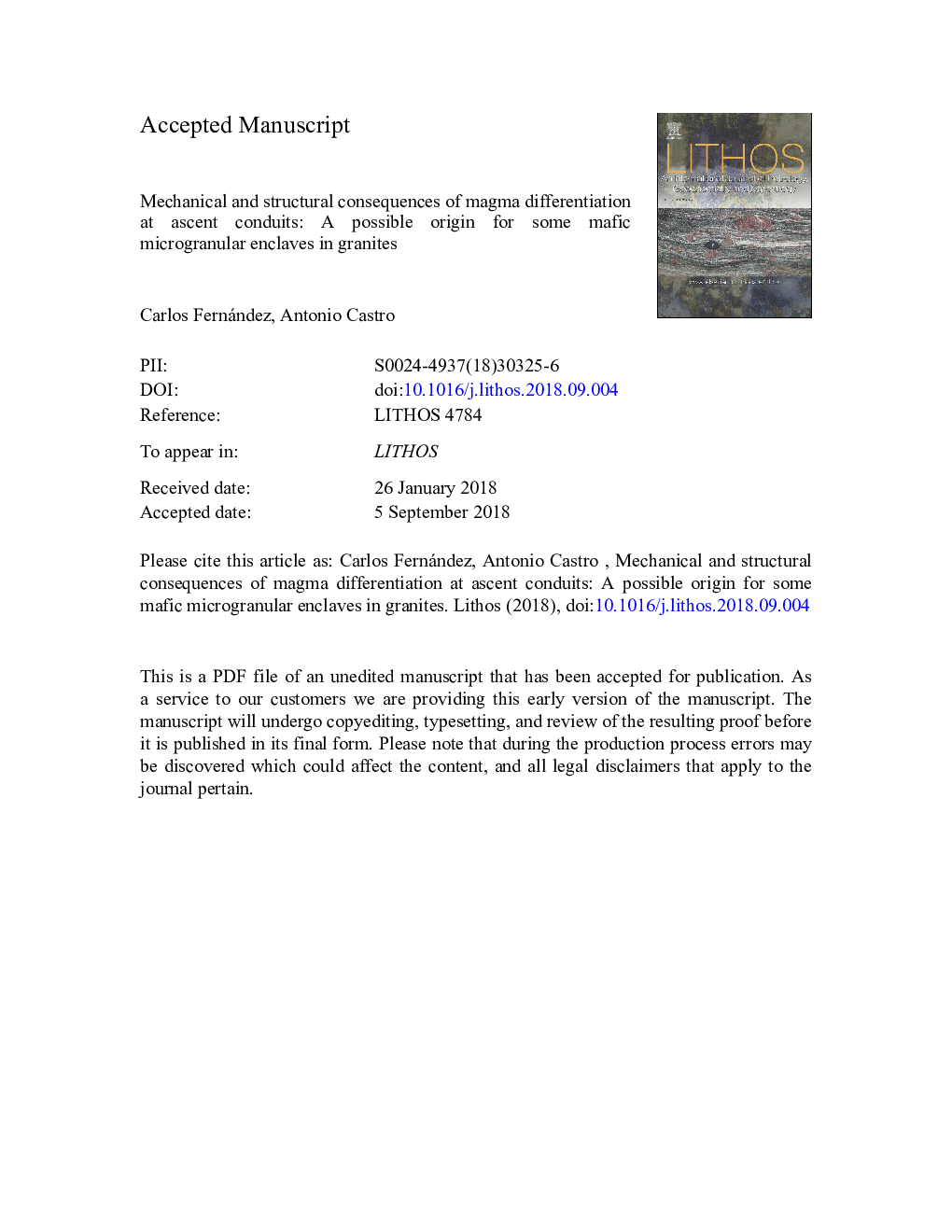| Article ID | Journal | Published Year | Pages | File Type |
|---|---|---|---|---|
| 10224356 | Lithos | 2018 | 53 Pages |
Abstract
This work evaluates the origin of mafic microgranular enclaves in granites through a process of magma splitting at the boundaries of ascent conduits, where an intermediate, high-silica andesite magma separates into two magma systems without a continuous change, one of Qz-dioritic composition and high-crystal content and another one of granite (sensu lato) composition and mostly liquid. Asemi-quantitative approximation considering the balance between advective and diffusive heat transfer has been followed, considering an order of magnitude procedure to estimate the thickness of the thermal boundary layer within an instantaneously emplaced dike. The resulting temperature gradient across the dike, and the expected geochemical variation evidenced by previous experimental results, have been used to determine crystallinity, viscosity, flow velocity, and shear stress profiles at a single transverse section, at 500â¯MPa of lithostatic pressure. The Qz-dioritic magma generated at the borders of the dike develops a strong crystallinity gradient, with a mafic chilled margin near the external contact of the dike, while crystal fraction remains very low (<10â¯vol%) in the differentiated granitic melt in the dike interior. The mafic chilled margin has a predominantly brittle behavior and can be broken by movement of the dike and host rock into fragments of sizes comparable to those observed in nature. Reheating and remelting of dike walls generates a strong decrease in the viscosity of the mush close to the internal geochemical contact with the granitic melt. This process leads to the formation of highly deformable channels that can entrain fragments of the previous chilled margin giving place to schlieren and enclave swarms, among many other structures. The process can be repeated through the sequential ascent of distinct magma batches transporting the mafic enclaves up to their final level of emplacement in granitic plutons and batholiths.
Related Topics
Physical Sciences and Engineering
Earth and Planetary Sciences
Geochemistry and Petrology
Authors
Carlos Fernández, Antonio Castro,
